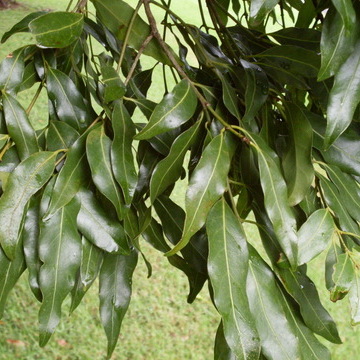A large bushy tree. It grows 15-30 m tall. It can spread 5-12 m wide. The leaves are narrow and sword shaped. They are shiny green on top and paler or bluish underneath. They are 7-18 cm long by 2-3 cm wide. The leaves are wavy along the edge. New growth is red. The flowers are cream or white. They are like tubes and softly hairy. They are about 0.5 cm long. They occur in panicles at the ends of stems. The fruit is oval and 0.8 cm long. The calyx is fleshy.


